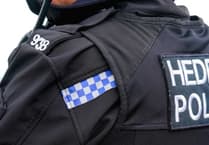HORSE riders in Carmarthenshire could get more off-road access to the countryside under plans approved by council chiefs.
Cabinet approved an equestrian strategy at a meeting on 29 September, describing it is as a first-of-a-kind in Wales.
The strategy followed a consultation which 502 people and groups responded to. Two-thirds of adult respondents said they often faced hazards while riding off and on the road.
The most popular option to overcome barriers to participation was more off-road access. A desire for more equestrian facilities, circular routes and easier to use gates was also expressed among other things.
A cabinet report said 16 per cent of Carmarthenshire’s population was estimated to have a connection with horse ownership and equestrianism, and that around 4.5 per cent of the population – just over 8,500 people – owned a horse.
It said fewer than 10 per cent of the county’s public rights of way network had equestrian access, “notably lower” than in surrounding counties.
Jane Langley, joint owner of Westwood Equestrian Centre, Saron, told the Local Democracy Reporting Service: “More bridleways is the thing we need. We are suffering and have to ride on the roads – people in cars hate it, we hate it. It’s so dangerous.”
She said she welcomed any move by Carmarthenshire to become a more “horse-friendly” council.
The cabinet report said Carmarthenshire had 166km of bridleways – excluding areas within Bannau Brycheiniog National Park – which horse riders can use. The county also has 83km of byway routes open to riders, and several riding centres. Equestrian-based spending in Carmarthenshire was estimated to exceed £46 million per year.
Referring to the survey, the report said: “Almost all participants felt that there is not enough off-road provision for horse riding/carriage driving. An assessment of provision in the county that is a public amenity as opposed to a commercial facility supports this view.”
The council’s equestrian strategy has 16 action points, some of which would need additional financing. They include:
– Improving and enhancing routes beneficial to equestrians when resources allow– Assessing footpaths on council-owned land to see if they’re suitable for a bridleway upgrade– Assessing council-owned land suitable for additional permissive equestrian access– Developing a volunteer equestrianism maintenance workforce– Inviting horse riders to respond to next year’s consultation about updating the county’s Active Travel network map.
The report said there was no legislation or approved policy in place for the promotion or enhancement of equestrianism, although Active Travel (Wales) guidance from 2021 contained equestrian access objectives. But it added that the Welsh Government was seeking to provide more countryside access for recreation through its access reform proposals, and that this work should be considered alongside the council’s.
Cllr Aled Vaughan, cabinet member for climate change, decarbonisation and sustainability, said horses were important to Carmarthenshire’s rural identity and that safe and connected routes were difficult to come by despite a “strong foundation of bridleways”.
He said approving the strategy would enable the council to prioritise the 16 actions, although budget challenges had to be considered.





Comments
This article has no comments yet. Be the first to leave a comment.